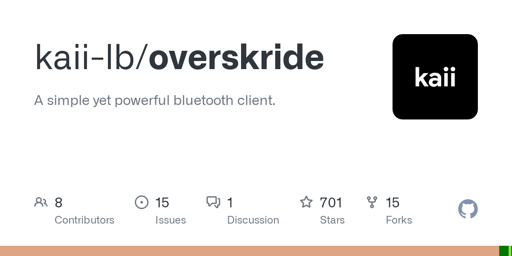- 2 Posts
- 6 Comments

 31·8 days ago
31·8 days agoIt’s a simple IPTV app. It supports m3u as well as xtream. It can be controlled by keyboard and opens videos/streams in a new mpv window.
I really like it although it does not do advanced things like showing program etc.

 14·8 days ago
14·8 days agoArch requires reading the manual to install it, so installing it successfully is an accomplishment.
It’s rolling release with a large repo which fits perfectly for regularly used systems which require up-to-date drivers. In that sense it’s quite unique as e.g. OpenSUSE Tumbleweed has less packages.
It has basically any desktop available without any preference or customisations by default.
They have a great short name and solid logo.
Arch is community-based and is quite pragmatic when it comes to packaging. E.g. they don’t remove proprietary codecs like e.g. Fedora.
Ubuntu is made by a company and Canonical wants to shape their OS and user experience as they think is best. This makes them develop things like snap to work for them (as it’s their project) instead of using e.g. flatpak (which is only an alternative for a subset of snaps features). This corporate mindset clashes with the terminally online Linux desktop community.
Also, they seem to focus more on their enterprise server experience, as that is where their income stream comes from.
But like always, people with strong opinions are those voicing them loudly. Most Linux users don’t care and use what works best for them. For that crowd Ubuntu is a good default without any major downsides.
Edit: A major advantage of Ubuntu are their extended security updates not found on any other distro (others simply do not patch them). Those are locked behind a subscription for companies and a free account for a few devices for personal use.

 2·20 days ago
2·20 days agoSadly they’ve gone up in price over the last 6 months.
Mindfactory had 16TB for 160€ (10€/TB), but now they want 240€ for 18TB (13.3€/TB).
On eBay there’s sellers like HMCW, which are now also more expensive. But returns/warranty are questionable to say the least.
Edit: I wanna punch myself because I didn’t get one at the time.
JPEG-XL allows the use of client-side synthesized grain. A method pioneered by Netflix/AV1 I believe. Compression algorithms struggle with high frequency detail, which often introduce visible artifacts. JPEG-XL allows to decouple the grain component from the actual image data. This allows for significantly more efficient compression of images that inherently require noise, such as those in gnome-backgrounds — smooth gradients that would otherwise be susceptible to color banding.


Dev needs to eat.